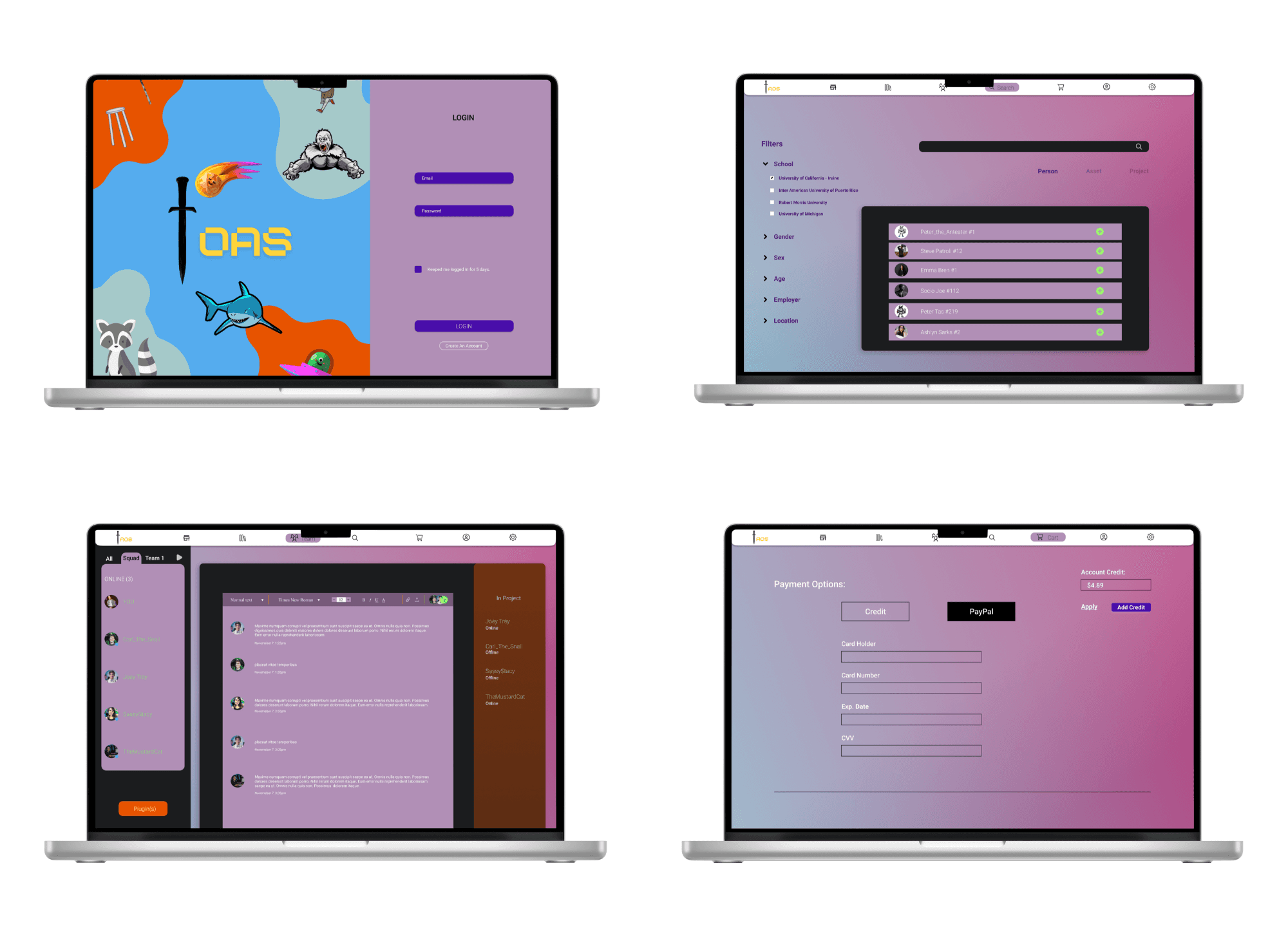
Game creators face a constant challenge: acquiring and integrating diverse game assets seamlessly into their projects. Decentralized Marketplace tackles this issue head-on by providing a user-friendly platform that streamlines the entire process. With a Decentralized Marketplace, developers can focus on creating unique and immersive experiences, not wrestling with asset logistics.
UI/UX Designer
Gaming
Figma, Miro, Google Suites, Maze
3
The current fragmented landscape for game asset acquisition hinders developer creativity and efficiency, demanding a centralized platform with seamless asset integration and collaborative features.
The Decentralized Marketplace offers a one-stop solution for game creators, providing a centralized library of diverse assets, seamless integration with development tools, and built-in collaboration features to streamline the entire asset acquisition and integration process, empowering them to focus on crafting immersive game experiences.
Resarch & Analysis
June 2021
Shift to Asset Store
August 2021
Design Process
Novemeber 2021
Pass to Development Team
January 2022
Research & Analysis
User Interviewing & Card Sorting
Through 9 user interviews conducted as part of a team, we gained valuable insights into user preferences for online stores. To further understand gamers' needs and inform an intuitive design approach, I facilitated a card sorting session. This combined research provided the foundation for creating a tailored interface that optimizes asset sourcing and integration, resulting in an enhanced user experience.
Roadmapping
As a key member of the team, I played an integral role in developing a strategic roadmap to navigate the project journey. Collaboratively, we identified and prioritized key features, maintaining focus throughout the process. By leveraging this roadmap, I actively contributed to informed design decisions, ensuring the successful execution of the project.
User Persona
Based on interviews with our user base, I focused on developing the persona for casual gamers, which served as a guiding principle in designing the store. This involved organizing key information to facilitate tailored decision-making, ensuring the store was optimized for the needs and preferences of our target audience.
Mood Board
A dynamic mood board captured the desired aesthetic and ambiance for the gaming store, inspiring a visually appealing and user-friendly design direction.
Design Process
To ensure a streamlined design and promote user interaction within the platform, I created low-fidelity wireframes for essential pages such as login, account creation, verification, payment, search, and team collaboration functionalities.
For the team collaboration section, I designed mid-fidelity mockups prioritizing user familiarity and security. Inspired by established e-commerce platforms in online gaming, I focused on creating seamless login and 2-way authentication processes that ensure a balance between a smooth user experience and robust security measures.
Following the design finalization, our design team, in which I played a key role, collaborated with the Project Manager to ensure a smooth handover process. This involved:
Comprehensive Documentation: We created detailed design documentation, including style guides, wireframes,mockups, and user interface specifications. This documentation, organized within Figma, served as a clear roadmap for the development team.
Organized Asset Delivery: All design assets, including icons, illustrations, and UI elements, were meticulously organized within Figma and delivered in a format readily usable by the developers.
Project Manager Collaboration: Alongside the team, I actively collaborated with the Project Manager to address any questions or clarifications from the development team, fostering a seamless transition from design to development.
The importance of user research was solidified during this project. Insights gleaned from user interviews and card sorting sessions were instrumental in creating a design that resonates with the target audience and provides an intuitive user experience.
A well-defined user persona proved to be an invaluable tool. It guided our design decisions throughout the process, ensuring a user-centric approach that truly met the needs of casual gamers.
Working effectively within a small design team (3 members) was crucial. We honed our communication skills and learned to leverage each other's strengths to achieve optimal results.
Entering a new industry like the game asset market required continuous learning. I familiarized myself with relevant systems and plugins used in the project, ensuring the feasibility and technical soundness of the design.



























